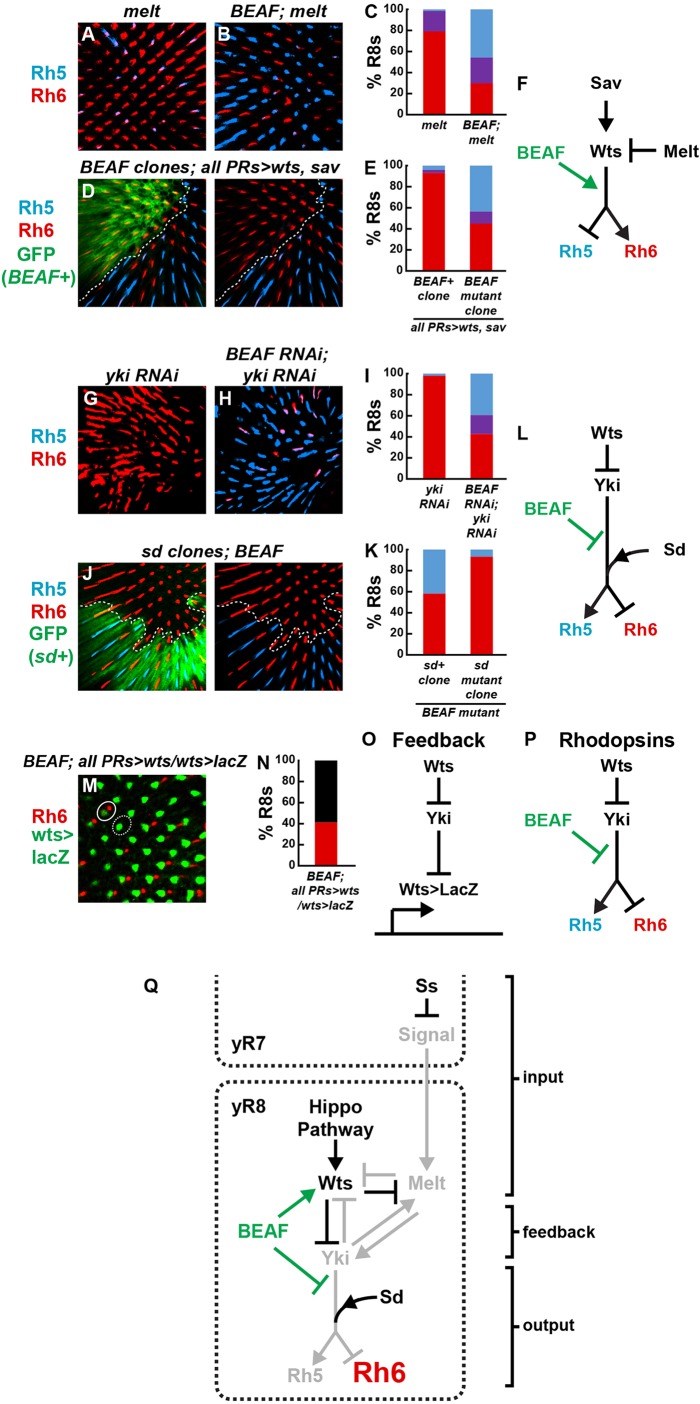Fig. 4.
BEAF is essential for Hippo pathway regulation of Rhodopsins, but not positive feedback, in R8 subtype specification. (A) melt mutants contained Rh6 in almost all R8s. (B) Rh5 was upregulated in BEAF; melt null double mutants. (C) Quantification of the data shown in A,B. (D) 0GMR-wts+sav induced Rh6 and inhibited Rh5 expression in otherwise wild-type R8s (GFP+). BEAF null mutant clones (GFP−) in GMR-wts+sav retinas showed increased Rh5 and decreased Rh6 expression. (E) Quantification of the data shown in D. (F) Schematic showing how BEAF acts downstream of wts and melt to regulate Rhodopsins. (G) yki-RNAi retinas displayed Rh6 expression in all R8s. (H) BEAF-RNAi+yki-RNAi resulted in upregulation of Rh5 and downregulation of Rh6. (I) Quantification of the data shown in G,H. (J) sd mutant clones (GFP−) in whole-eye BEAF null mutant background (GFP+) showed Rh6 in almost all R8s. (K) Quantification of the data shown in J. (L) Model for BEAF regulation of Rhodopsin output downstream of Yki and upstream of Sd. (M) wts-lacZ (green) was expressed in all R8s in BEAF null;GMR-wts retinas. Circle shows Rh6 and wts-lacZ co-expressed; dotted circle shows R8 expressing wts-lacZ but not Rh6. Note: R8 nuclei are in a different cell region than Rh-containing rhabdomeres. (N) Quantification of the data shown in M. Red indicates percentage of R8s expressing Rh6; black indicates percentage of R8s lacking Rh6 (presumably expressing Rh5). (O,P) BEAF is dispensable for Hippo pathway feedback, but not Hippo pathway regulation of Rhodopsins. (Q) Working model for BEAF regulation of R8 subtypes. Arrows indicate genetic regulation.

